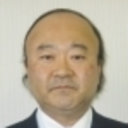Distribution, subtype population, and IgE positivity of mast cells in chronic rhinosinusitis with nasal polyps.
الكلمات الدالة
نبذة مختصرة
Chronic rhinosinusitis with nasal polyps (CRSwNP) has been categorized into 2 subtypes in the Asian population: eosinophilic chronic rhinosinusitis (ECRS; similar to CRSwNP in Western countries) and non-ECRS (characterized by inflammation dominated by T-helper cell type 1). The pathogenesis of CRSwNP and the role of mast cells are poorly understood.
To investigate the distribution, phenotypes, and immunoglobulin E (IgE) positivity of mast cells in these 2 subtypes of CRSwNP.
We collected nasal tissue from patients with CRSwNP and control subjects. The mRNA for mast cell proteases tryptase and chymase was measured using real-time polymerase chain reaction, and the distribution of each type of protease-positive mast cell was examined using immunohistochemistry and immunofluorescence. IgE distribution on mast cells was determined using double-immunofluorescent staining for IgE and tryptase.
Expression of tryptase mRNA was significantly increased in nasal polyps from patients with the 2 subtypes of CRSwNP compared with controls. Immunohistochemistry showed increased numbers of tryptase-positive mast cells in the epithelium, glands, and submucosa of ECRS polyps, whereas the number of tryptase- and chymase-positive mast cells was increased in the glands and submucosa of non-ECRS polyps. IgE-positive mast cells were abundant in the epithelial, glandular, and submucosal regions of ECRS polyps but few were detected in non-ECRS polyps.
The present study demonstrates that the distribution, subtype population, and IgE positivity of mast cells is different between ECRS and non-ECRS nasal polyps. Our results suggest a role for IgE-mediated mast cell activation in the pathogenesis of ECRS.


